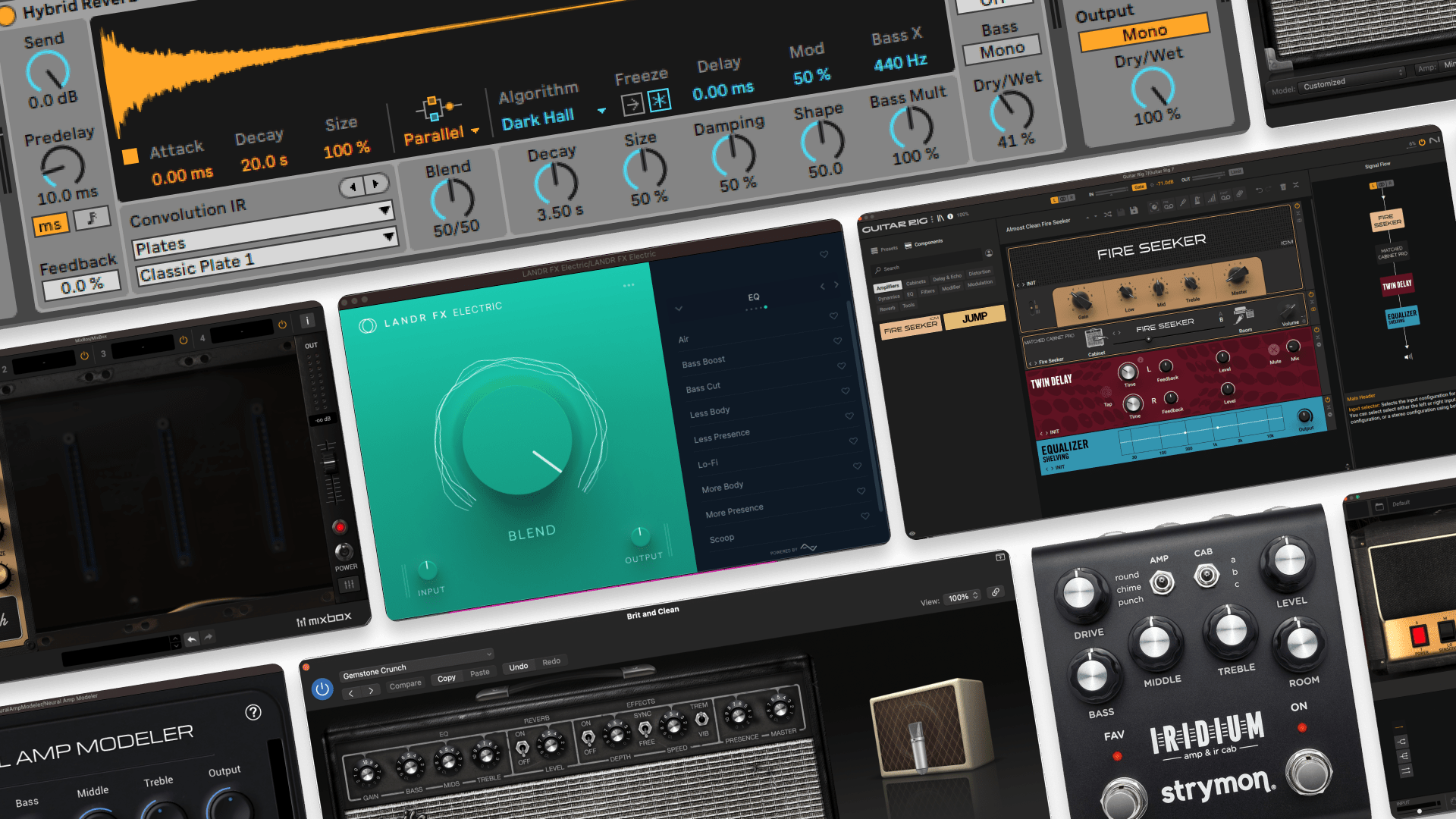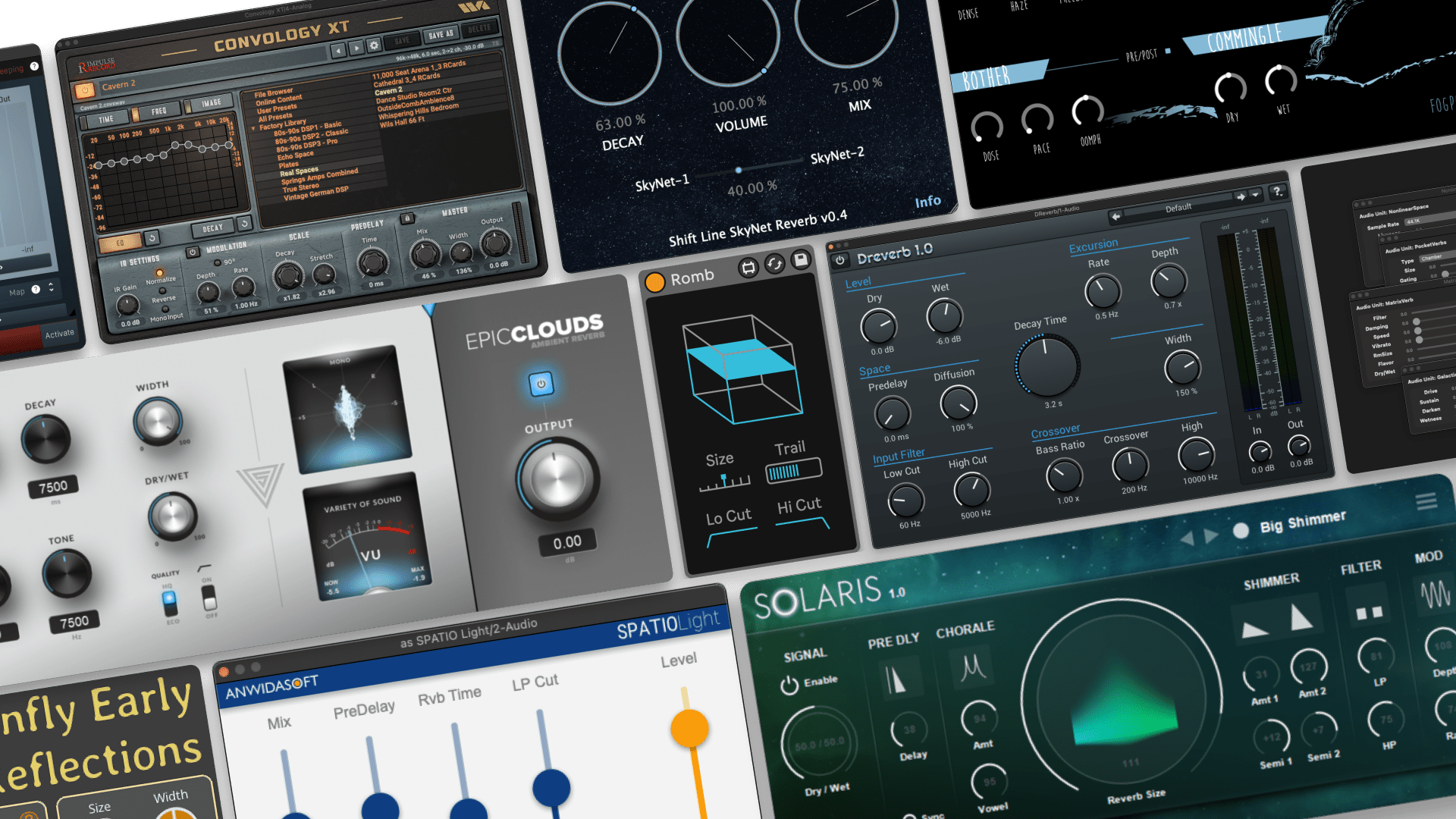
6 Accords de guitare alternatifs pour inspirer votre son

Pour jouer et interpréter de la musique, vous devez bien connaître votre instrument.
Cependant, parfois une solide compréhension technique vous enferme dans des schémas difficiles à briser.
La curiosité et le risque sont cruciaux pour trouver l’inspiration musicale. Mais les conditions imprévisibles peuvent être difficiles à recréer pour les musiciens avec des années d’expérience en jouant.
Une façon de vous forcer à ne pas être familier avec la musique à la guitare est d’explorer les accordages alternatifs.
Aujourd’hui, nous partageons six excellents accords de guitare alternatifs. Mais d’abord, parlons de ce que sont les accords de guitare et pourquoi il est important de varier.
Guides théoriques, conseils de production, nouveaux plugins gratuits, guides de matériel et bien plus encore—livrés chaque semaine
Suivez le blog LANDR.
What are alternate guitar tunings?
Alternate guitar tunings are any combination of notes chosen for the open strings of the guitar other than the standard EADGBE tuning. Alternate guitar tunings allow guitarists to access different tonalities or patterns on the instrument.
Guitars can be tuned in any way you like, but most guitarists adhere to standard tuning:
6E-5A-4D-3G-2B-1E
In standard tuning, guitars are tuned with six strings that start low and gradually get higher. Alternative tunings occur when the guitar’s strings are tuned to different notes.
Best alternate tunings
1. Drop D tuning
The most common alternate tuning for guitar is Drop D. It’s also one of the simplest. Simply tune your low E string down one step to get drop D tuning.
Drop D tuning might come to mind for many guitarists, but there are a virtual endless amount of other tunings to explore.
Most common alternate tunings follow standard tuning’s low to high convention, but each features a unique combination of notes.
How can alternate tunings lead to musical inspiration? Something as basic as a G major chord or scale won’t translate to most alternative tunings.
Working with new and unfamiliar tunings forces you to think about chords and riffs in an entirely new way.
Working with new and unfamiliar tunings forces you to think about chords and riffs in an entirely new way.
Curiosity and problem-solving are skills that might have been dormant in your guitar playing for years become essential to writing music in alternative tunings.
Approaching playing in these tunings with patience and an open mind will translate into powerful creative inspiration.
Here are five more excellent alternate tuning options to explore:
2. DADGAD
DADGAD tuning is kind of like an extended version Drop D tuning. In this tuning, the 6th E string is tuned down to D, the B string is tuned down to A, and the 1st E string is tuned down to D.
This tuning is commonly found in Celtic music, but it’s also used in genres like rock, folk, and metal.
DADGAD was made famous by British folk guitarist Davey Graham, who was inspired to explore the tuning after hearing an oud player in Morocco.
Led Zeppelin’s guitarist Jimmy Page used DADGAD tuning for the song “Kashmir.”
3. DADF#AD
Similar to DADGAD, DADF#AD is an extension of Drop D tuning, but the notes in this one makeup one large D Major chord.
Also known as Open D Tuning, this alternate tuning is popular with slide guitarists and those who specialize in the fingerpicking style.
In this tuning, the 6th E string is tuned down to D, the G string is tuned down to F#, the B string is tuned down to A, and the 1st E string is tuned down to D.
The alternative rock band Wilco uses DADF#AD tuning in their song “Kamera” from the album Yankee Hotel Foxtrot.
4. GABDEG
Ce réglage bourdonnant a été popularisé par le groupe de rock américain Sonic Youth. GABDEG est idéal pour explorer les sons rock, dream pop et metal.
Dans ce réglage, la 6ème corde E est accordée en G, la corde D est accordée en B, la corde D est accordée en D, la corde B est accordée en E et la première corde E est accordée en G. La corde A reste identique à l’accordage standard.
Sonic Youth utilise cet accordage captivant dans leur chanson “Teen Age Riot.”
5. DGDGBD
Souvent appelé Open G Tuning, le DGDGBD présente un accord de sol majeur et est idéal pour les guitaristes qui aiment jouer avec un slide.
Les joueurs de blues, de rock et de folk utilisent généralement cet accordage alternatif.
Avec l’accordage ouvert de G, la 6ème corde E est accordée en D, la corde A est accordée en G et la 1ère corde E est accordée en D. Les 4ème et 2ème cordes D et B restent les mêmes qu’en accordage standard.
Le guitariste de blues mythique Robert Johnson a utilisé cet accordage dans sa chanson “Walkin Blues”.
6. CGCFCE
Surnommé affectueusement le « Nick Drake Tuning » d’après l’artiste folk britannique Nick Drake, cet accordage est bas, ronronnant et rempli de possibilités créatives infinies.
Le folk va forcément bien avec cet accordage, mais il peut aussi facilement s’adapter au rock et à la dream pop.
Dans ce réglage, la 6ème corde E est accordée en G, la corde D est accordée en B, la corde D est accordée en D, la corde B est accordée en E et la première corde E est accordée en G. La corde A reste identique à l’accordage standard.
Nick Drake utilisait cet accordage dans beaucoup de ses chansons, notamment dans “Hazey Jane I”.
Réglage
Les accordages alternatifs sont un excellent moyen d’apporter de la nouveauté et du risque dans votre jeu, mais cette sensation d’imprévisibilité diminuera au fur et à mesure que vous connaîtrez mieux chaque option.
En tant que musiciens, le processus de garder les choses intéressantes et nouvelles est quelque chose sur lequel nous devrons revenir encore et encore tant que nous ferons de la musique.
Des guides d'équipement, des astuces, des tutos, des idées inspirantes et plus - livrés chaque semaine.
Suivez le blog LANDR.
Publications les plus récentes




